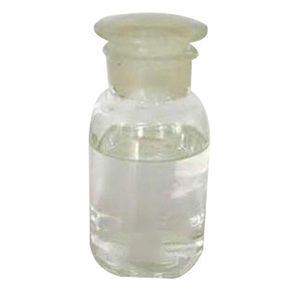
Concentrated Phosphoric Acid, Ph Eur
H3PO4 -- 98.0 -- 7664-38-2
DEFINITION
Content: 84.0 per cent m/m to 90.0 per cent m/m.
CHARACTERS
Appearance: Clear, colourless, syrupy liquid, corrosive.
Solubility: Miscible with water and with ethanol (96 per cent). When stored at a low temperature it may solidify into a mass of colourless crystals which do not melt at a temperature below 28C.
Relative density: About 1.7.
IDENTIFICATION
A. Dilute with water. The solution is strongly acid.
B. Solution S (see Tests) neutralised with dilute sodium hydroxide solution gives the reactions of phosphates.
TESTS
Solution S: Dilute 10.0 g to 150 ml with water R.
Appearance of solution: Solution S is clear and colourless.
Substances precipitated with ammonia: To 10 ml of solution S add 8 ml of dilute ammonia. Any opalescence in the solution is not more intense than that in a mixture of 10 ml of solution S and 8 ml of water.
Hypophosphorous acid and phosphorous acid: To 5 ml of solution S add 2 ml of silver nitrate solution and heat on a water-bath for 5 min. The solution shows no change in appearance.
Chlorides: Maximum 50 ppm, determined on solution S.
Sulphates: Maximum 100 ppm.
Arsenic: Maximum 2 ppm, determined on 7.5 ml of solution S.
Iron: Maximum 50 ppm.
Heavy metals: Maximum 10 ppm.
H3PO4 --- 98.00
Phosphoric acid --- 7664-38-2.
Phosphoric Acid contains not less than 85.0 percent and not more than 88.0 percent, by weight, of H3PO4.
Caution: Avoid contact, as Phosphoric Acid rapidly destroys tissues.
Orthophosphoric Acid
Phosphoric(V) Acid
H3PO4
Formula Wt 98.00 CAS Number 7664-38-2
REQUIREMENTS
Assay: >85.0% H3PO4
Color (APHA): 10
Insoluble matter: 0.001%
Chloride (Cl): 3 ppm
Nitrate (NO3): 5 ppm
Sulfate (SO4): 0.003%
Volatile acids (as CH3COOH): 0.001%
Antimony (Sb): 0.002%
Calcium: 0.002%
Magnesium: 0.002%
Potassium (K): 0.005%
Sodium (Na): 0.025%
Arsenic (As): 1 ppm
Heavy metals (as Pb): 0.001%
Iron (Fe): 0.003%
Manganese (Mn): 0.5 ppm
Reducing substances: Passes test.
Orthophosphoric Acid
H3PO4 Formula wt 98.00
INS: 338 CAS: [7664-38-2]
DESCRIPTION
Phosphoric Acid occurs as a colorless, aqueous solution, usually available in concentrations ranging from 75.0% to 85.0%. It is miscible with water and with alcohol.
REQUIREMENTS
Labeling: Indicate the percent, or the percent range, of Phosphoric Acid (H3PO4).
Identification: A 1:10 aqueous solution gives positive tests for Phosphate.
Assay: Not less than the minimum or within the range of percentage claimed by the vendor.
Arsenic: Not more than 3 mg/kg.
Cadmium: Not more than 3 mg/kg.
Fluoride: Not more than 10 mg/kg.
Lead: Not more than 3 mg/kg.